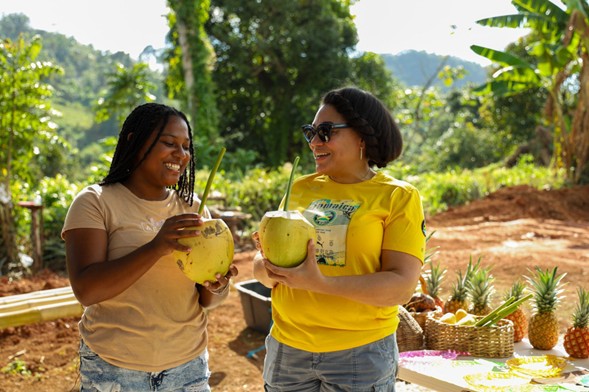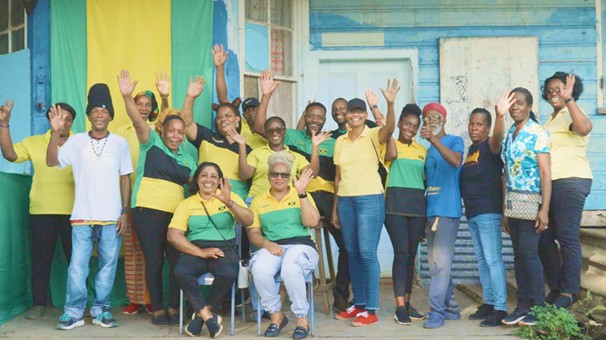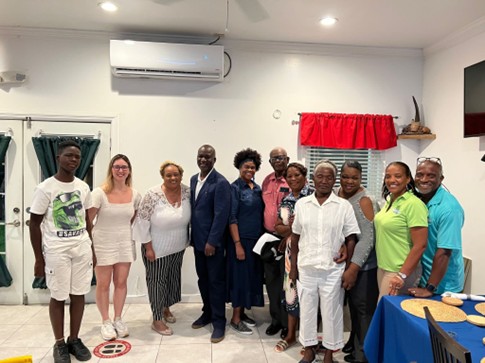
Community-Based Tourism (CBT) offers a powerful model for sustainable, inclusive growth by placing local communities at the heart of tourism. With the right mix of community engagement, capacity-building, and strategic promotion, destinations can successfully develop CBT initiatives that enrich both travelers and residents.
Today's travelers crave deeper, more meaningful experiences—connecting with local traditions, supporting small businesses, and exploring beyond the typical tourist trail. And the trend is only growing: Allied Market Research projects the Community-Based Tourism (CBT) market will reach $2,136.8 billion by 2032, with a remarkable compound annual growth rate of 14.1%.
Trove Tourism Development Advisors explores how destinations—both emerging and established—can embrace the power of CBT and tap into this growing opportunity.

What is Community-Based Tourism?
Community-Based Tourism (CBT) is a sustainable travel model that puts local communities at the center of tourism development. It includes experiences like homestays, eco-lodges, guided tours, and craft workshops—all led by community members.
By giving communities control over tourism operations and revenue, CBT supports inclusive economic growth and creates new job opportunities. It also helps preserve cultural heritage, protect the environment, and offer travelers authentic experiences—rooted in real life, not mass-market imitations.
Trove is proud to support CBT initiatives across the Caribbean, including in Jamaica, Dominica, and The Bahamas (Andros and South Eleuthera). By equipping local enterprises with the tools they need to succeed, destinations can build more responsible, resilient tourism sectors—fostering sustainable growth that benefits both visitors and the communities they explore.
Opportunity for Emerging Destinations
For destinations entering the global tourism market, starting with a sustainable, community-driven approach can set the tone for long-term success—laying a strong foundation and helping them stand out in a competitive landscape. By prioritizing CBT from the onset, emerging destinations, such as Andros Island in The Bahamas, can empower economic development through tourism.
The largest island in The Bahamas, Andros had a unique opportunity to grow its untapped tourism sector and boost visibility. In partnership with The Bahamas Ministry of Tourism, Investment & Aviation, the Caribbean Tourism Organization, and others, Trove helped establish the Andros Ecotourism Collective—a CBT cooperative that highlights the island’s vibrant culture and natural beauty.
Through targeted capacity-building initiatives including digital marketing training and hands-on support, over 100 local businesses refined their offerings and connected with global travelers. Our team was immersed in the experience—staying at local inns, joining tours, and collaborating with passionate entrepreneurs across all four districts. Over multiple travel missions, we built lasting relationships with Andros’ tourism leaders and continue to offer ongoing guidance.
The result: 30+ new business websites, a website for the Collective including a directory of all the members, increased bookings, and expanded opportunities for small business owners—from tour guides to artisans.
Following Andros’ success, Trove has extended CBT efforts to South Eleuthera. In partnership with The Bahamas Development Bank, we are supporting 25 local businesses in developing 10–15 new market-ready experiences. Training covers business planning, pricing, and branding—positioning the region to benefit from Disney’s cruise port and future overnight travelers.
Community-led tourism creates foundations that are sustainable, inclusive, and built for long-term success.

Opportunity for Established Destinations
Even hotspot destinations stand to gain from integrating Community-Based Tourism. Established tourism hubs often face challenges, such as overtourism or tourism leakage, that leave local communities behind. By investing in CBT, these destinations can diversify their offerings, reduce pressure on overcrowded areas, and direct economic benefits to underserved communities—fostering a more inclusive and sustainable tourism model.
Jamaica, for example, had a prime opportunity to encourage visitors to explore all of its communities and its vibrant culture, as well as to grow the percentage of its tourism revenue that remains in the local economy.
The Jamaica Social Investment Fund (JSIF), Jamaica Tourist Board (JTB), and Tourism Product Development Company (TPDCo) partnered with Trove on a national initiative to elevate Community-Based Tourism Enterprises (CBTEs). Through digital marketing training, website development, and advertising campaigns, the project aimed to boost CBT’s visibility and viability across the island.
Trove’s team conducted workshops and digital training for over 120 participants. Sessions focused on social media, storytelling, and digital tools to help CBTEs expand their reach and improve competitiveness.
In 2025, this groundwork led to the launch of Yaad Luv: True Jamaican Experiences—a domestic campaign encouraging Jamaicans to explore and support CBT in their own communities. Centered on authentic, locally led experiences, the campaign received overwhelmingly positive feedback.
With this strong foundation in place, Jamaica is now preparing to take its CBT offerings global. An international campaign will promote experiences beyond resorts—creating new opportunities for both travelers and communities and helping Jamaica capture more tourism value.

How to Better Capture and Sell CBT
Building a successful CBT strategy takes a step-by-step approach—starting with local engagement. Jamaica offers a strong example, with efforts focused on empowering locals, island-wide training, and a national campaign encouraging Jamaicans to explore their communities. With an international push next, the key takeaway is clear: begin at home.
Here are four essential steps to better capture and sell CBT.
Step 1: Engage the Community
Stakeholder buy-in is critical. CBT thrives when locals feel ownership. Forming clusters, cooperatives, or steering groups—like those formed by Trove in Jamaica, Andros, Dominica, South Eleuthera, and Phnom Penh—can help organize efforts and ensure everyone has a voice. Success relies on shared goals, consistent communication, and recognizing individual needs within the group.
Step 2: Train and Digitally Onboard
CBTEs need the tools to compete. This includes workshops on business planning, product development, pricing, and digital marketing strategy. In Andros, 30+ CBTEs are now equipped with digital platforms to enable marketing and booking.
Step 3: Build Domestic Awareness
Before reaching international audiences, drive further local involvement. Jamaica’s Yaad Luv campaign encouraged Jamaicans to travel within their island, helping build a loyal base and strengthen CBT offerings through real-time feedback and local support.
Step 4: Launch International Marketing
Once the foundation is strong, scale globally. Jamaica is now preparing to launch an international campaign to introduce travelers to its CBT experiences beyond the resort gates—positioning the country as a leader in inclusive, sustainable tourism.
Submit Your Thought Leadership

Share your thought leadership with the Destinations International team! Learn how to submit a case study, blog or other piece of content to DI.


